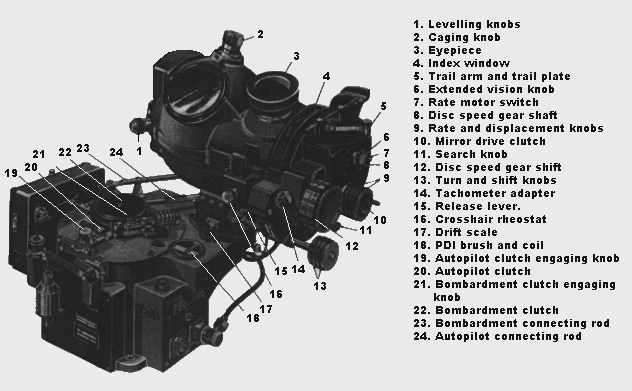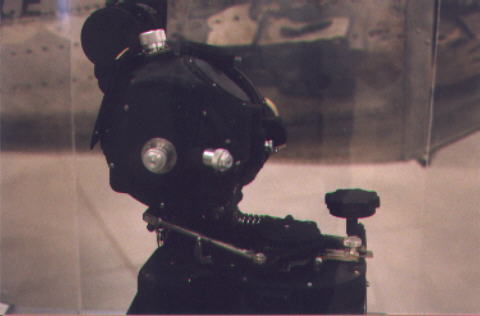
|

|

|

|
|
At the start of the war, bombing was more of an art than a science. To place enough ordinance on target to be effective, bombers were required to go low. This put the bombers at a disadvantage since it was easier for enemy fighters to intercept and manuever for a kill. Anti-Aircraft Artillery was also deadlier for low flying aircraft. The British were experiencing heavy casualties in daylight raids and decided to try night bombing runs. Unfortunately, the dark worked to the advantage of the target as well. However, things would change when the US entered the war. In 1921 the US Navy drafted specifications for a bombsight that would allow bombing from high altitude. Carl Norden, developed a gyro-stabilized bombsight in 1923 and delivered the Mk. 3 to the Navy for trials. The first model was effective only against stationary targets. The next model was a gyro-optical device delivered in 1924 (Mk. 15). This version had a timing device which told the bombardier when to drop the bombs. By 1931 the Navy had completed testing and achieved impressive results. The USAAF was also impressed and placed their own orders. The Mk. 15 was literally a bombsight with a plane attached to it. The bombardier was allowed to take lateral control from the pilot to line up the sight for the bombing run. In 1943 the Norden M-series was delivered to the USAAF. It is estimated that this version was 6 to 8 times more precise than the RAF Mk XIV bombsight. It is estimated that the RAF was capable of putting only 5% of its ordinance within a mile of their aiming point under combat conditions. In contrast, the 8th Air Force was believed to be able to put 24% of their bombs to within 1,000 yds of their targets. By 1944 this figure would rise to 40% to within 500 yds. The Norden bombsight enabled Forts to fly above the flak and still hit their target with reasonable accuracy. The daylight bombing strategy became a viable option to take the war to Germany and bring the war to a quick end. |